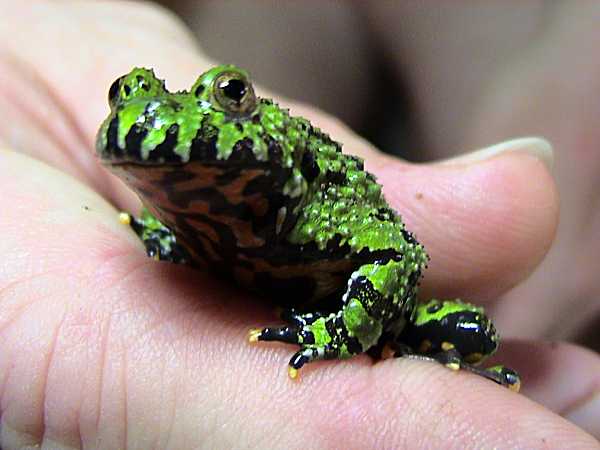Facts About Oriental fire-bellied toad
The Oriental fire-bellied toad, scientifically known as Bombina orientalis, is a small amphibian native to Korea, northeastern China, and parts of Russia. Interestingly, they can also be found in introduced populations around Beijing. These vibrant amphibians are popular pets among enthusiasts who maintain vivaria.
Although commonly referred to as toads, they are actually frogs, distinguished by the tubercles on their backs. Their appearance is particularly striking, featuring bright green backs with black mottling and vivid yellow to red undersides. A notable defense mechanism is their toxic skin secretions, which serve to deter predators when the frogs feel threatened.
The breeding season for these toads commences in the spring. Males attract females with a distinctive barking croak. After mating, females lay their eggs in clusters near water. These eggs hatch into tadpoles within a few days, and it takes about 12-14 weeks for them to metamorphose into juvenile toads.
In captivity, Oriental fire-bellied toads thrive on a diet of small crickets and other invertebrates. Their enclosures should include both terrestrial and aquatic areas, as they are not strong swimmers. With proper care, these toads can live for over a decade, with some reports indicating lifespans of up to 30 years.
It is essential to treat the water to remove chlorine and chloramine before adding it to their habitat. Due to their mild toxicity, handling them frequently is not advisable. Additionally, they are not compatible with most other frog species because of their toxicity. To maintain their vibrant colors, it is beneficial to provide beta-carotene to the insects they eat.

 North Korea
North Korea